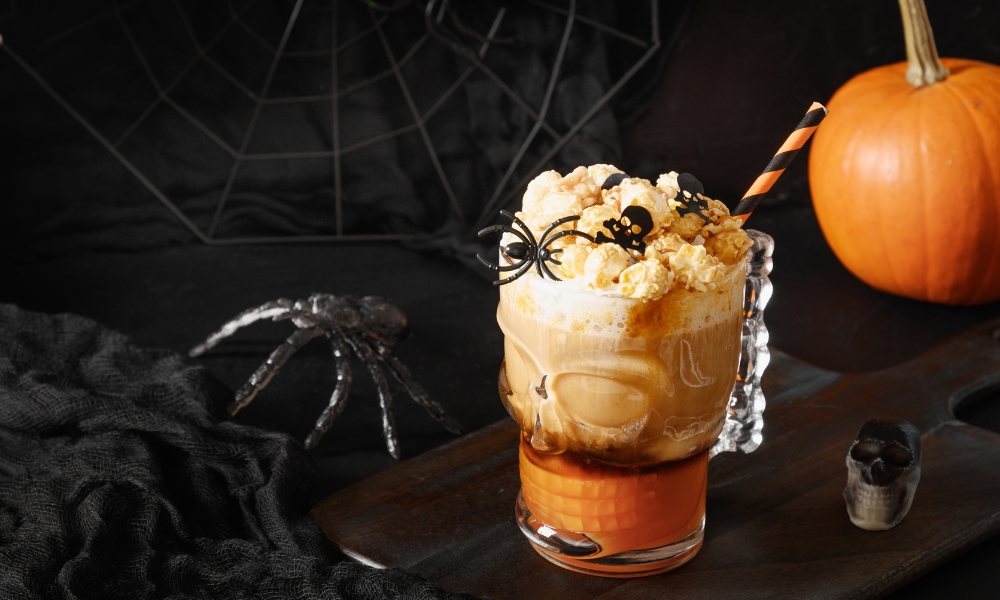The Dark Origins Behind America’s Pumpkin Spice Trend
 The Pumpkin Spice
The Pumpkin Spice
When you visit the US during autumn, you quickly learn that the season has its own signature scent. It’s warm, sweet and instantly familiar, a mix of cinnamon, nutmeg, ginger and clove drifting from cafés, bakeries and supermarket shelves. That blend is known as pumpkin spice, and to many Americans, it represents the start of the cosy season. But beneath its cheerful, nostalgic reputation lies a story that stretches far beyond lattes and holiday pies.
 The Halloweenee Pumpkin Spice
The Halloweenee Pumpkin Spice
How Pumpkin Spice Became a Seasonal Icon
You may have first encountered pumpkin spice in the most traditional way: a slice of pie served at a family dinner or a holiday celebration. For decades, that was its primary role, a once-a-year comfort flavor tied to Thanksgiving. Today, the story is very different. Pumpkins hardly come into the picture anymore; instead, pumpkin spice has become a commercial powerhouse.
Americans now spend hundreds of millions of dollars every year on pumpkin spice-flavored products. The category is still growing fast, with projections suggesting that spending could more than double by 2035. What was once a simple baking blend has turned into a seasonal ritual you’ll see on café boards, snack aisles and even in non-food products.
A Spice Blend With Origins Far From the US
Even though pumpkin spice is framed as a quintessentially American flavor, its ingredients come from much farther away. Cinnamon grew naturally in Sri Lanka, nutmeg and cloves originated in Indonesia, and ginger travelled through Asia and eventually across the globe. Their path into American kitchens wasn’t simple or peaceful.
The Colonial Past Behind a Modern Trend
To understand how these spices became global staples, you have to look back to a period marked by intense competition for control of the spice trade. European powers fought for dominance over regions where these spices grew, often using force, exploitation and harsh labor systems.
Historical documents describe monopolies, violence and forced labor during the height of the spice trade, shaping how these ingredients spread across the world.
As the spices reached Europe, they became associated with winter celebrations and sweet holiday recipes. When Europeans later settled in North America, they brought those traditions with them. Over time, settlers began blending the imported spices with local ingredients like pumpkin, creating what would eventually become the familiar pumpkin spice flavor.
From Early Recipes to a National Tradition
Pumpkin-based recipes began appearing in early American cookbooks in the late 1700s. Through the 19th and early 20th centuries, as convenience foods became more common, brands started selling pre-mixed “pumpkin spice” blends. That shift made the flavor more accessible, turning it into a pantry staple rather than a specialty ingredient.
By the late 1800s, pumpkin spice was deeply tied to Thanksgiving, a holiday that has long been framed with nostalgic imagery, even though its historical reality was far more complex. Still, the flavor continued to solidify its place in American food culture.
The Drink That Changed Everything
Pumpkin spice may have been part of American cooking for centuries, but it was a single drink that pushed it into global pop culture. When a major coffee chain introduced the pumpkin spice latte in 2003, the flavor shifted from holiday tradition to seasonal event.
The drink mixed espresso, milk and a sweetened pumpkin spice syrup (later made with real pumpkin). But the appeal went beyond taste. The latte created a feeling tied to comfort, nostalgia and the anticipation of autumn. Its limited release each year only heightened the excitement. As the drink’s popularity surged, it reshaped the way Americans experienced the season.
Why Pumpkin Spice Works So Well
There’s also a sensory explanation for the craze. Compounds in cinnamon, ginger and cloves create a gentle warming sensation, making the blend feel especially comforting in creamy drinks and desserts. That physical warmth, paired with its familiar aroma, explains why the flavor resonates so strongly year after year.
Even with the occasional backlash, some calling it overhyped, others dismissing it as “basic”—pumpkin spice continues to dominate autumn menus and shopping carts.
When a Seasonal Trend Becomes a Cultural Force
Walk into any US store during autumn and you’ll see how far the trend has spread. Pumpkin spice now appears in foods, drinks, snacks, candles and even unexpected household items. At this point, it’s less of a seasonal fad and more of a cultural fixture.
For travelers, this means pumpkin spice becomes part of the seasonal experience. Whether you’re exploring a city, visiting markets or stopping into cafés between sightseeing, you’ll encounter the flavor everywhere—sometimes in places you wouldn’t expect.
A Seasonal Ritual With a Complicated History
Pumpkin spice may feel like a fun, harmless symbol of the US autumn, but its story is layered. It begins with spices grown on distant islands, moves through difficult chapters of global history and eventually lands in a modern world where a single seasonal drink can spark both devotion and debate.
If you’re visiting the US during the colder months, seeing pumpkin spice on every menu becomes part of the cultural landscape. Knowing its complex backstory adds an unexpected depth to a flavour that, for many, simply tastes like a warm moment in the middle of fall.



